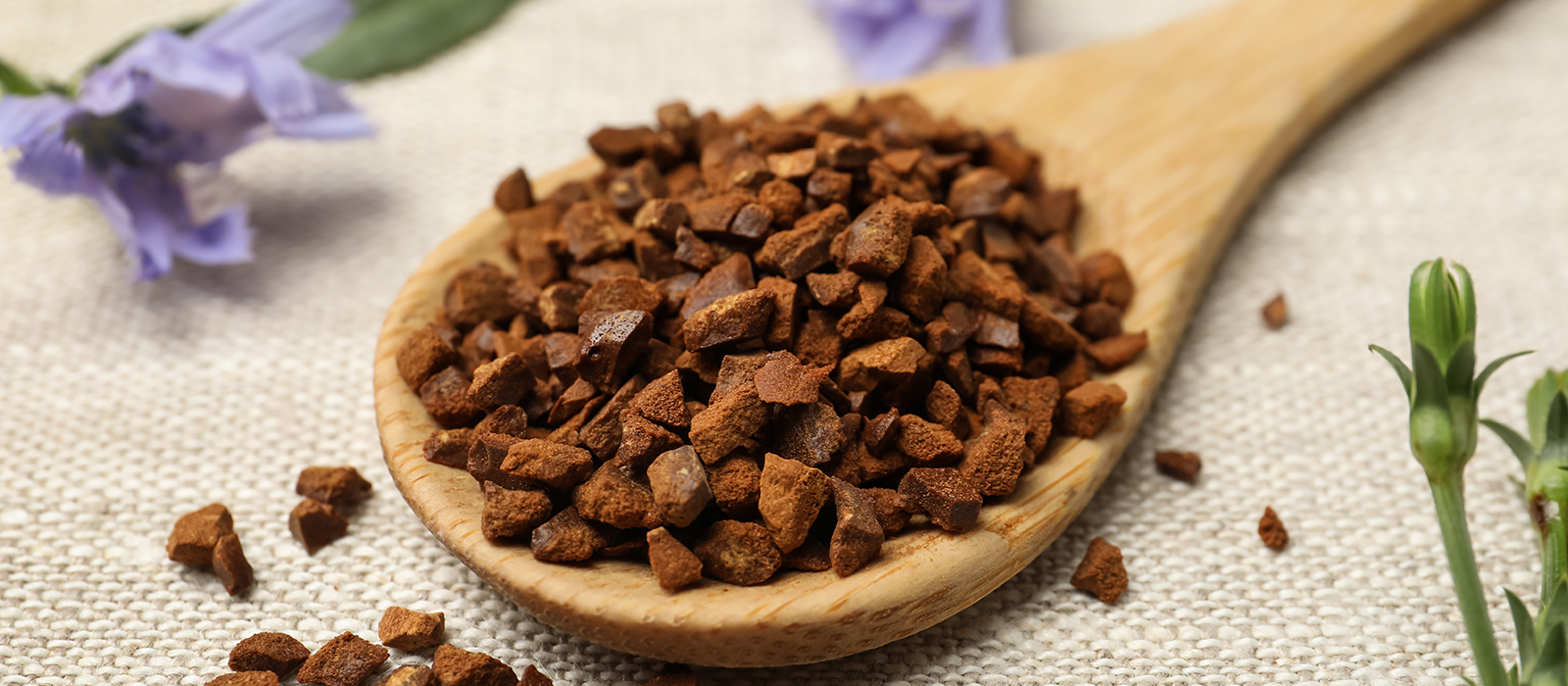
- Home
- Everything You Need to Know About Chicory

Everything You Need to Know About Chicory
Written by Julie
Reading time 5 minWhen we hear about chicory drinks, we usually think about its association with coffee. It brings back memories of moments spent with our grandparents but do you actually know about the plant’s history? Let find out about its uses and its properties that can make it a great alternative to coffee.
The History of Chicory
Many cultures have used it over the centuries. The year 2000 marked the 7th millennium of man living with this plant! In fact, researchers have found traces of its existence in the ashes of prehistoric fires. But the first documented usage dates back to ancient Egypt. The oldest text on this subject is a papyrus scroll dating back to 4000 BC found in the Leipzig library, not far from Berlin. Along the Nile the Egyptian people roasted wild chicory before making it into food or medicine. They even knew about its medicinal properties, mainly for helping digestion. It’s popularity carried on far beyond the ancient Egyptian period, reaching ancient Rome. Indeed, they used it to treat skin diseases and to purify the liver. Still today, the plant works wonders for liver and stomach issues. Cultivated in Europe as a medicinal plant during the Middles Ages, it was finally a series of circumstances that allowed this plant to develop at the expense of coffee. Firstly, when Napoleon blocked coffee imports due to the continental blockade in November 1806 and then during the two world wars. So, its root became destined for food and making drinks. It was precisely at this moment that the plant became popular, was industrially produced and that the white coffee became one of Europe’s favourite drinks.
What is Chicory?
Wild chicory or bitter chicory (from the Latin Cichorium intybus) is a perennial that is easily recognised by its azure blue flowers. It’s a herb that belongs to the asteraceae family, also known as a “blue daisy” (because of its blue flowers). We are only interested in one of the three types of chicory: sitavium, also called coffee chicory. This variety is cultivated for its root, mostly produced in northern France. Before being drunk or eaten in a salad, the flower must first keep inulin in its root, a natural fibre that is made up of several sugars. Without the root, you cannot drink it.
What are the Benefits of Chicory?
Chicory is an important part of a healthy diet. Just like fruit, chicory is full of natural sugars. Instead of consuming products with added sugar, choose a natural product rich in fructose, glucose and saccharose. It’s one of the many reasons why it works well for many diets, for example for a diabetic. Pregnant women and children can also consume it, unlike coffee. It’s called “the sun’s bride” because it changes colour depending on the time of day and can help you to stay hydrated. Opt for a hot drink such as a hazelnut chicory milk or even a cold one with a chicory café frappé. Its caramelised taste will give all of your drinks a boost. Most importantly, chicory is rich in fibre thanks to inulin. A true prebiotic, it helps to regulate you and ensures good intestinal bacteria. We estimate that 3 glasses per day is enough to resolve any digestive issues.
What is the Difference Between Coffee and Chicory?
Chicory and coffee look similar, have the same ritual… and both share our breakfast table. Although we tend to associate them and think of them as the same thing, they are different plants and most importantly different drinks.
The Origin
Coffee comes from the coffee tree, a tree that grows in humid tropical climates. These are the optimal conditions for its cherries, which provide the coffee, producing the best varieties of coffee. Chicory, on the other hand, is more or less a low-growing flower. It grows in temperate climates, mainly in Europe! In fact, France is the number one European producer for chicory grown in the North of France. Finally, with this plant, the root is roasted, not the fruit.
A Different Processing Method
Although there are several similarities in the production stages of coffee and the “sun’s bride”, the processing method that allows you to get this famous drink is completely different. First, as we’ve seen, it’s the chicory root that’s harvested. This root is then cut into thin strips, called “cossettes” and dehydrated. The roasting process is then the same as for coffee… before the roasted cossettes are then ground. To make the chicory soluble and liquid, the cossettes are put into extractors. Once submerged in the hot water, they release their precious nectar. For the soluble product, a trip to a type of giant dryer gives it its final form: a fine and smooth powder.
Caffeine Content
As we mentioned earlier, this plant contains no caffeine. You can drink it at any time of day without risking your sleep quality. In short, this powder is the perfect coffee substitute. But, if you miss your morning coffee, keep reading.
Why Put Chicory in Coffee?
Many people dream about being able to drink their coffee at any time of day without risking insomnia, but few are able to. However, it is possible. First try to reduce the amount of caffeine in your drink by mixing your coffee with this marvellous root. MaxiCoffee has selected products that you may like (organic chicory, 100% chicory etc.) in a dedicated section. Better yet, make your own. Choose a suitable ground coffee and add in a few tablespoons of chicory. You’ll get a chicory coffee that has the spirit of coffee but the sweetness of the star plant. You may even find that you no longer feel guilty about having your coffee and swear by this coffee substitute.
All in all, chicory is an incredibly interesting and unique plant that can bring a wide array of benefits and flavor into coffee. With its various uses, medicinal benefits, and amazing history, it’s no wonder why people have been using chicory since the ancient Egyptians. Now that you know more about it, you might be ready to give it a try.
Discover all of our articles


